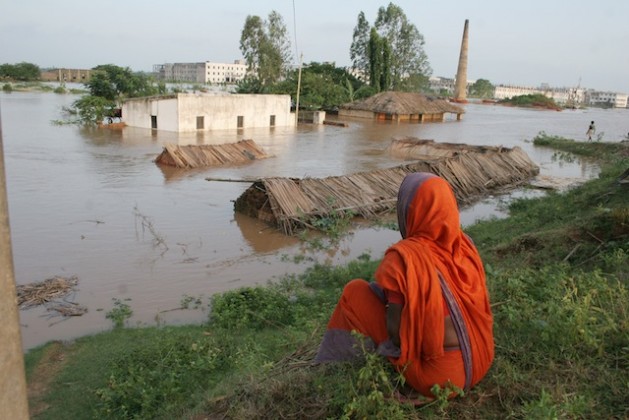Water a Weapon of War or a Tool for Peace? — Global Issues
STOCKHOLM, Sweden, Jul 11 (IPS) – The role of water in conflicts is changing, with more attacks against environmental and civilian infrastructure. Dr Martina Klimes of the Stockholm International Water Institute (SIWI) recently held a lecture describing the shifting security landscape and how water can be both a weapon and a victim of war – and sometimes a tool for peace.
The Kakhovka dam disaster in Ukraine on 6 June is a painful reminder of how collapsing water infrastructure can cause enormous suffering in times of war, sometimes with consequences that last for generations. Ukraine accuses Russia of destroying the dam and using it as a weapon of war.
“That would be in direct conflict with the 1977 Additional Protocol I to the Geneva Conventions which protects civilians in times of war,” says Dr Martina Klimes who is Advisor Water and Peace at SIWI.
On 14 June, she participated in a breakfast meeting at the Swedish parliament together with other representatives from the Stockholm Hub on Environment, Climate and Security of which SIWI is a founding member.
Klimes’ presentation outlined the different roles of water in war:
- • Direct impact – where water and attacks on water infrastructure are used as a weapon of war.
• Indirect impact – where military operations harm the environment, for example poisoning water sources or contaminating soil.
• Transboundary impact – where the consequences are felt also in other countries.
During the war in Ukraine, all three dimensions are carefully monitored by local and international organizations to an extent rarely seen in other wars. Already before the Kakhovka dam disaster, Ukrainian authorities estimated the cost of the environmental impacts of the war to be approximately 50 billion euros.
Rivers, groundwater, and soil are polluted, and many national parks are impacted in the country which is described as the most biodiverse in Europe. In 2022, 16 million Ukrainians needed water, sanitation, and hygiene assistance.
By tracking the environmental consequences of the war so closely, the Ukrainian government hopes not just to facilitate reconstruction. Another aim is to collect evidence that could be used in a future war tribunal against Russia.
President Zelensky has said that charges could include ecocide, in addition to the four types of crimes currently covered by the International Criminal Court (ICC). In recent years, the idea of making ecocide a fifth crime enshrined in the Rome Statute of the ICC has started to gain traction.
The parliament of the European Union recently voted to make ecocide part of EU law.
At the United Nations, a commission has assessed gaps in existing international law and presented a set of more far-reaching draft principles on protection of the environment in relation to armed conflicts.
But researchers who have studied Yemen, Libya, and Syria say that attacks on civilian and environmental infrastructure have become more common in the past decade.
“This causes immense suffering for local populations and the impact often goes beyond national borders. We also know that environmental degradation is a risk multiplier that can trigger social instability and violence,” Klimes says.
Meanwhile, a landmark report on the topic – Environment of Peace – was presented last year by the Stockholm International Peace Research Institute (SIPRI), another partner of the Stockholm Hub on Environment, Climate and Security.
At the same time, countries and regions can reduce tensions by strengthening the resilience of ecosystems and humans. Collaborating around for example shared waters can also foster cooperation and peace.
To raise awareness of these complex interlinkages, SIWI works actively to bring together actors with different types of competencies. One example is the Shared Waters Partnership Programme to strengthen transboundary water cooperation.
Every year, SIWI also hosts a high-level panel during World Water Week on water-related security issues. This year the event will take place on 23 August at 11am CET with the theme Innovative Approaches to Support Peace and Conflict Prevention.
Maria Sköld, is Senior Manager, Communications.
Martina Klimes, PhD, is Advisor, Water and Peace, and Transboundary Water Cooperation.
IPS UN Bureau
Follow @IPSNewsUNBureau
Follow IPS News UN Bureau on Instagram
© Inter Press Service (2023) — All Rights ReservedOriginal source: Inter Press Service
Check out our Latest News and Follow us at Facebook
Original Source




